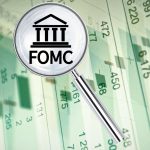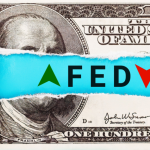With traditional bank savings accounts paying a modest amount of interest, more individuals are looking for better-paying alternatives. Among them are money market accounts, other bank-account options, and peer-to-peer lending. Here’s what you need to know about the best alternatives to bank savings accounts.
Key Takeaways
- You can turn to several low-risk alternatives to savings accounts for a potentially higher yield.
- Money market accounts and certificates of deposit (CDs) may provide higher yields.
- Peer-to-peer lending is another alternative to savings accounts.
- Credit union bank accounts may provide higher rates than bank accounts, but you must be a member to open one.

Investopedia / Ellen Lindner
1. Higher-Yield Money Market Accounts
One simple alternative to depositing money in a traditional bank savings account is a money market account. Money market accounts are insured by the Federal Deposit Insurance Corporation (FDIC) just like regular savings or checking accounts.
In addition to paying higher interest rates than standard savings accounts, money market accounts offer limited checking account services. There is usually a relatively low maximum number of checks that you can write on your account per month—typically between five and 10.
In return for abiding by this restricted withdrawal activity, money market account holders receive a higher interest rate than those that are available for traditional savings accounts. A bank offering only a 0.10% interest rate on standard savings accounts, for example, might offer a 0.25% interest rate on a money market account.
Money market accounts usually have other restrictions as well, such as a required minimum opening deposit amount or a minimum balance requirement. If there is a minimum balance requirement and the account drops below the minimum, account holders may be paid the lower standard interest rate offered on regular savings accounts. Some banks also charge a penalty fee.
Before opening a money market or other alternative account, scrutinize the fine print of your agreement for any restrictions that apply to the account, along with all fees that the account may incur.
2. Certificates of Deposit (CDs)
If you don’t need access to your funds for at least a year or two, you can consider certificates of deposit (CDs). Generally, the longer you are willing to have your money tied up, the higher the interest rate you can get.
One-year and two-year CDs typically offer higher interest rates than rates on traditional bank savings accounts. But your money will be locked up for the term of the CD—typically a few months to a few years. If you withdraw it before that, you may be subject to fees and penalties.
With a little planning, you can use a CD ladder strategy to spread your across CDs of varying term lengths to provide more liquidity.
Note
Since the terms of CDs—including interest rates and early withdrawal penalties—vary significantly between institutions, shop around for a CD to maximize your return.
3. Credit Unions and Online Banks
You can often get a higher interest rate simply by moving a savings account from a traditional bank to a credit union or online bank. Credit unions operate much the same as banks, although they typically offer fewer financial services. Credit unions commonly offer significantly better interest rates on savings accounts than banks do because credit unions are not-for-profit organizations.
Credit union accounts are federally insured through the National Credit Union Share Insurance Fund (NCUSIF).
Online banks, such as Ally Bank or American Express Bank, also typically offer higher interest rates on savings accounts. They generally have lower overhead expenses thank banks that have physical branches, so they can pass their savings on to customers. Moreover, these banks typically offer more attractive rates on CDs than brick-and-mortar banks.
Related: The 6 Best Online Banks for May 2024
4. High-Yield Checking Accounts
High-yield checking accounts also tend to offer better interest rates than savings accounts. Some of these checking accounts offered more than 6% annual percentage yield as of May 2024.
To get the higher interest rates, you typically have to meet certain requirements, such as having a minimum balance, establishing direct deposit or bill pay, or conducting a minimum number of monthly debit card transactions.
If you fail to meet the requirements for receiving the higher rates, there’s usually no penalty. You are often simply provided the bank’s standard lower rate for checking accounts.
5. Peer-to-Peer (P2P) Lending Services
Peer-to-peer (P2P) lending services, usually operated through websites, have become increasingly popular in recent years. P2P lending provides a way to borrow money and can provide returns of about 5% to 10% for individual lender investors who fund the loans. Through websites such as Prosper.com, individuals on the lending side provide loan capital for individuals on the borrowing side.
Lending accounts with even the best P2P lenders are not FDIC-insured like bank savings accounts and you could lose money. Borrowers are screened by the service and typically must meet certain requirements to get loans.
However, the risk on any individual loan is spread across a large number of lender investors. Individual lenders usually fund no more than $25 to $50 of any one loan. An individual seeking a loan of $2,000 for home improvements, for example, may have the loan funded by 40 different individual lenders, each providing $50 toward the loan total.
The lending service evaluates borrowers and the purpose of the loan to determine credit risk and the interest rate to be charged for a loan. Individual lender investors can select their level of risk to determine which kinds of loans their money will be used to fund.
Note
One of the advantages of putting money into a peer-to-peer lending account is that you can open a lending account with a very low minimum deposit, as little as $25, and can choose to add money to the account monthly just as one does with a savings account.
Keep in mind that the regulatory environment around P2P lending is complicated and can differ from state to state. Due diligence before investing—and careful examination of how payment to you as a lender is organized—is critical.
Frequently Asked Questions (FAQs)
Are There Risks To Saving My Money Somewhere Besides a Savings Account?
Some options, like peer-to-peer (P2P) lending, are not insured by the FDIC, so you could lose some or all of your money. Other options, like high-yield checking accounts, require you to follow rules like minimum account balances and limited withdrawals.
Is a Savings Account the Best Place To Store My Savings?
Although setting up a savings account at your bank is safe and convenient, there are some downsides. Individuals who store money in a savings account miss out on larger interest payments that a high-yield savings account or certificate of deposit (CD) could provide.
What Are the Benefits of Using a Savings Account?
You won’t earn as much interest keeping your money in a savings account, but there are some benefits. Your money will be fully insured through an FDIC member bank and you won’t face penalties for early withdrawals or going below a minimum balance.
The Bottom Line
Alternatives to the traditional passbook savings account can allow you to earn higher interest rates on your money. Some options may not offer the liquidity of a savings account and may have requirements ranging from minimum balances and monthly limits on transactions to lack of federal insurance. Consider consulting with a professional financial advisor for the best course of action to take with your money.
Read the original article on Investopedia.


